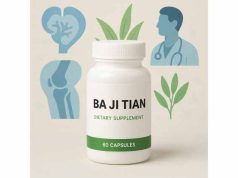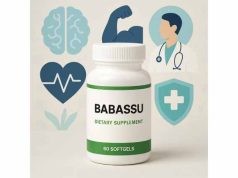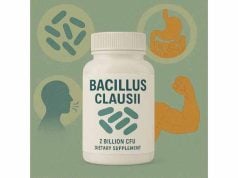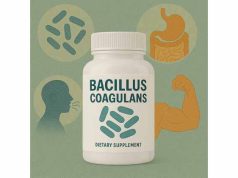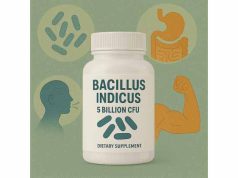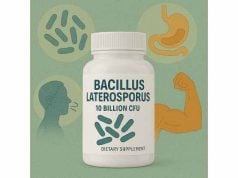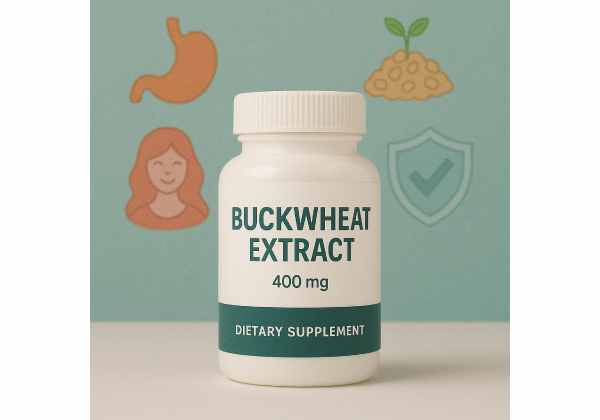
Buckwheat extract, derived from the seeds and sometimes the flowering parts of the buckwheat plant (Fagopyrum esculentum), is rapidly gaining recognition as a natural supplement for cardiovascular, metabolic, and antioxidant support. Though often thought of as a grain, buckwheat is actually a gluten-free pseudocereal packed with unique phytochemicals, rutin, quercetin, D-chiro-inositol, and a robust profile of minerals and amino acids. Used for centuries in traditional Eastern European and Asian diets, modern science now confirms buckwheat extract’s role in promoting heart health, stabilizing blood sugar, and protecting against oxidative stress. This comprehensive guide explores what makes buckwheat extract a standout supplement, its key mechanisms, proven benefits, optimal usage, and safe supplementation practices.
Key Takeaways
- Supports heart health and healthy blood pressure: Rich in rutin, magnesium, and antioxidants that protect blood vessels and circulation.
- Promotes stable blood sugar: D-chiro-inositol and fiber help improve glucose metabolism and support insulin sensitivity.
- Potent antioxidant activity: Defends against free radical damage and inflammation throughout the body.
- Gluten-free and nutrient-dense: Safe for those with celiac disease or gluten intolerance; supplies protein, fiber, and essential minerals.
- Gentle, well-tolerated supplement: Side effects are rare when taken as directed; appropriate for daily wellness routines.
Table of Contents
- Buckwheat Extract Explained: Botanical Identity, Nutritional Profile, and Uses
- Science of Buckwheat Extract: Bioactive Compounds and Mechanisms
- Clinically Backed Benefits and Evidence-Based Applications of Buckwheat Extract
- Buckwheat Extract Safety, Tolerability, and Possible Side Effects
- Buckwheat Extract Dosage: Forms, Usage Tips, and Administration
- Frequently Asked Questions About Buckwheat Extract
Buckwheat Extract Explained: Botanical Identity, Nutritional Profile, and Uses
Buckwheat, known scientifically as Fagopyrum esculentum, is an ancient crop cultivated for its edible seeds. Unlike true grains such as wheat or barley, buckwheat is botanically unrelated to grasses and is naturally gluten-free, making it a popular choice for those with celiac disease or gluten sensitivity.
Botanical Identity and Origin
Buckwheat originated in Central and East Asia, where it has been grown for thousands of years. The plant is characterized by triangular seeds, broad leaves, and clusters of small, fragrant white or pink flowers. Today, buckwheat is cultivated globally and features prominently in traditional cuisines from Japan (soba noodles) to Eastern Europe (kasha, blinis).
Nutritional and Phytochemical Profile
- Proteins and amino acids: Buckwheat contains all eight essential amino acids, making it a high-quality plant protein source.
- Vitamins and minerals: Rich in magnesium, manganese, copper, phosphorus, iron, and zinc, as well as B vitamins like niacin and riboflavin.
- Polyphenols: Most notably rutin and quercetin, two flavonoids with strong antioxidant, anti-inflammatory, and vascular-protective properties.
- D-chiro-inositol: A unique compound in buckwheat linked to improved glucose metabolism and insulin sensitivity.
- Dietary fiber: Both soluble and insoluble fibers help support digestion, gut microbiome health, and cholesterol balance.
Forms and Preparation of Buckwheat Extract
Buckwheat extract is produced by concentrating the active phytochemicals from seeds, and sometimes the flowers, using water or alcohol-based extraction methods. This results in a potent supplement available as:
- Capsules or tablets (standardized for rutin or polyphenols)
- Powders for mixing with drinks or smoothies
- Liquid extracts/tinctures
Some supplements focus on high rutin content for vascular and antioxidant benefits, while others provide a broad-spectrum extract containing all natural compounds.
Traditional and Modern Uses
- Culinary staple: Used for porridge, noodles, pancakes, and baked goods—especially in gluten-free diets.
- Folk medicine: Historically prescribed for varicose veins, high blood pressure, and as a general tonic for “circulatory strength.”
- Modern supplementation: Supports heart, metabolic, and antioxidant health, and may be integrated into wellness regimens for those seeking natural support for vascular function and blood sugar balance.
Summary
Buckwheat extract is a nutritionally rich, gluten-free supplement offering concentrated doses of protein, minerals, and powerful antioxidants. Its roots in both traditional cuisine and herbal medicine highlight its versatility and value in a holistic approach to wellness.
Science of Buckwheat Extract: Bioactive Compounds and Mechanisms
The impressive health benefits of buckwheat extract are rooted in its unique blend of bioactive compounds. Understanding these key phytochemicals and their actions provides a foundation for its many applications in preventive and therapeutic health.
Major Bioactive Components
- Rutin (quercetin-3-rutinoside):
- A bioflavonoid concentrated in buckwheat seeds and flowers.
- Strengthens capillaries, supports blood vessel flexibility, and exhibits anti-inflammatory and antioxidant effects.
- Promotes microcirculation and may reduce bruising, swelling, or symptoms of chronic venous insufficiency.
- Quercetin:
- Another potent antioxidant and anti-inflammatory compound.
- Supports immune function, stabilizes mast cells, and may lower allergy symptoms.
- Has demonstrated protective effects for the heart, brain, and metabolic system.
- D-chiro-inositol:
- Rare in the plant kingdom, but abundant in buckwheat.
- Plays a role in insulin signaling and glucose metabolism, helping improve blood sugar balance—especially beneficial for those with insulin resistance or polycystic ovary syndrome (PCOS).
- Magnesium and trace minerals:
- Essential for heart rhythm, muscle relaxation, and metabolic processes.
- Support nerve function and help regulate blood pressure.
- Dietary fiber and resistant starch:
- Feed beneficial gut bacteria, lower cholesterol, and slow glucose absorption for steady energy and appetite control.
Mechanisms of Action in the Body
- Antioxidant defense: Rutin and quercetin neutralize free radicals, lowering oxidative stress and inflammation linked to chronic disease.
- Vascular protection: These flavonoids reinforce capillaries, support healthy blood vessel tone, and may help lower high blood pressure.
- Glycemic control: D-chiro-inositol and fiber improve insulin sensitivity and smooth out blood sugar fluctuations.
- Cholesterol regulation: Buckwheat extract may lower LDL cholesterol and triglycerides, supporting a healthier lipid profile.
- Neuroprotection: Animal and cell studies suggest quercetin and rutin help defend neurons from damage and inflammation.
Synergistic Benefits
Buckwheat’s matrix of nutrients and phytochemicals act synergistically—meaning their benefits are often greater together than individually. For example, the combination of rutin and magnesium may provide more complete cardiovascular support, while fiber enhances metabolic and digestive effects.
Safety and Absorption
Buckwheat’s active compounds are easily absorbed by the body, and the supplement is considered safe for daily use in most adults. The absence of gluten and common allergens makes it accessible to sensitive individuals.
Summary
Buckwheat extract’s potent health-promoting effects are driven by a unique suite of flavonoids, inositols, minerals, and fiber. These bioactive ingredients act across multiple systems to support circulation, metabolic health, and overall wellness.
Clinically Backed Benefits and Evidence-Based Applications of Buckwheat Extract
Modern research has validated many of the traditional uses of buckwheat and opened the door to new therapeutic possibilities. Buckwheat extract’s benefits are broad, affecting the heart, metabolism, blood vessels, immune system, and more.
1. Cardiovascular Support and Blood Vessel Protection
- Reduces high blood pressure: Rutin and magnesium help relax blood vessels and improve circulation, making buckwheat extract valuable for those with hypertension or poor microcirculation.
- Strengthens capillaries: Clinically used for varicose veins, chronic venous insufficiency, and reducing bruising or leg swelling.
- Lowers cholesterol and triglycerides: Dietary fiber, quercetin, and resistant starch may reduce total cholesterol, LDL, and support overall lipid balance.
2. Blood Sugar and Metabolic Balance
- Improves insulin sensitivity: D-chiro-inositol increases the body’s response to insulin, helping manage blood sugar, especially in those with metabolic syndrome or PCOS.
- Smoothes blood sugar spikes: Fiber slows carbohydrate absorption and reduces post-meal glucose fluctuations.
3. Antioxidant and Anti-Inflammatory Action
- Protects cells from free radical damage: Rutin and quercetin reduce inflammation throughout the cardiovascular system, brain, and major organs.
- Supports immune defense: Antioxidants aid in balancing immune responses and may ease allergy symptoms.
4. Neuroprotective and Cognitive Benefits
- Supports brain health: Early studies indicate buckwheat extract may protect against neurodegeneration, improve memory, and support cognitive resilience with aging.
- Reduces oxidative stress in the nervous system: This is thought to play a role in long-term brain health and mental clarity.
5. Digestive Wellness and Gut Health
- Prebiotic fiber: Promotes growth of healthy gut flora and may improve digestion, bowel regularity, and gut barrier integrity.
- Soothes inflammation: Anti-inflammatory properties can help with mild gut irritation.
Who May Benefit Most
- Adults with cardiovascular risk factors (high blood pressure, high cholesterol)
- People with metabolic syndrome, insulin resistance, or PCOS
- Those seeking a gluten-free, nutrient-dense daily supplement
- Anyone looking for comprehensive antioxidant protection
How to Incorporate Buckwheat Extract
- Capsules/tablets: For consistent dosing and ease of daily use.
- Powdered extracts: Add to smoothies, yogurt, or oatmeal.
- Liquid extracts: Useful for those who prefer tinctures or want to blend with other supplements.
Summary
Buckwheat extract offers substantial evidence-based benefits, with research showing improvements in vascular health, metabolic balance, antioxidant status, and more. Its unique phytochemical profile makes it a well-rounded, gentle, and effective daily supplement.
Buckwheat Extract Safety, Tolerability, and Possible Side Effects
Buckwheat extract is widely regarded as a gentle and safe supplement for the majority of users, but as with any botanical product, understanding its safety profile, potential adverse effects, and special precautions is important for optimal results and peace of mind.
General Safety Profile
- Naturally gluten-free and non-allergenic: Buckwheat is not a true grain and does not contain gluten, making it safe for those with celiac disease or gluten sensitivity.
- Rich in nutrients, low in anti-nutrients: Unlike some other seeds and grains, buckwheat contains only minimal levels of phytates and oxalates, reducing the risk of mineral absorption issues.
Common and Mild Side Effects
- Digestive comfort: Most people tolerate buckwheat extract well, but some may experience mild bloating, gas, or changes in stool if taken in high doses—primarily due to its fiber content.
- Allergic reactions: Rare, but buckwheat allergy can occur. Symptoms may include skin rash, itching, hives, or, in very rare cases, more severe reactions (e.g., difficulty breathing). Allergy is more common in people regularly exposed to buckwheat in food or occupational settings.
Rare and Serious Reactions
- Severe allergy (anaphylaxis): Though extremely rare, individuals with known buckwheat allergies should avoid all forms, including supplements and foods containing buckwheat extract.
- Drug interactions: Buckwheat extract may mildly lower blood sugar and blood pressure. While this is usually beneficial, it could potentially enhance the effects of medications for diabetes or hypertension. Monitor your response and consult your doctor if you’re taking prescription medications for these conditions.
Contraindications and Special Populations
- Pregnancy and breastfeeding: Buckwheat as a food is considered safe. There is limited data on concentrated extracts, so women who are pregnant or breastfeeding should consult their healthcare provider before supplementing.
- Children: Buckwheat extract is generally safe for children in food amounts. For use as a supplement, lower doses are recommended and it’s best to seek pediatric guidance.
- History of food allergy or asthma: Individuals with multiple food allergies, especially to seeds or nuts, should exercise caution.
Minimizing Risk and Ensuring Safe Use
- Start with a low dose: Particularly if you have never consumed buckwheat before. Gradually increase as tolerated.
- Choose reputable brands: Select extracts that are standardized for rutin or polyphenols and tested for purity, heavy metals, and contaminants.
- Monitor for unusual symptoms: Stop use and seek medical attention if you experience signs of allergy, persistent digestive discomfort, or any unexpected reaction.
Practical Safety Tips
- Stay hydrated: The fiber in buckwheat extract absorbs water—drinking extra fluids can help minimize digestive side effects.
- Do not use as a replacement for medical care: If you have a chronic health condition, work with your healthcare team when integrating new supplements.
Summary
Buckwheat extract is safe and well-tolerated for most people when used as directed. The risk of serious side effects is extremely low, but as with any supplement, responsible use, starting slow, and sourcing high-quality products are the keys to maximizing benefits and minimizing risk.
Buckwheat Extract Dosage: Forms, Usage Tips, and Administration
Understanding how to properly use buckwheat extract ensures you get the most out of its broad benefits while minimizing any risk of unwanted effects. This section breaks down the various forms, best practices, and practical advice for daily use.
Forms of Buckwheat Extract
- Capsules and Tablets:
- Standardization: Look for products standardized to 10–40% rutin or polyphenols.
- Typical dose: 250–500 mg once or twice daily.
- Best for: Those who want consistent, measured supplementation.
- Powdered Extract:
- How to use: Mix 1/2 to 1 teaspoon into smoothies, yogurt, water, or juice.
- Best for: Flexible dosing, combining with other superfoods, or adding to recipes.
- Liquid Extracts/Tinctures:
- How to use: Typical dose is 1–2 ml (20–40 drops) in water, 1–2 times daily.
- Best for: Quick absorption, blending with other liquid supplements, or for those who dislike capsules.
Best Practices for Dosage and Timing
- Start with the lower end of the dosing range: Especially if new to buckwheat, gradually increase as needed for optimal effect.
- Take with food: This enhances absorption and minimizes any mild digestive discomfort.
- For cardiovascular or blood sugar support: Consistency is key—daily use over weeks to months is most effective.
- Monitor for effects: Note improvements in energy, circulation, or metabolic wellness, and adjust dose based on your response.
Combining with Other Supplements
Buckwheat extract can safely be combined with most common supplements, including:
- Magnesium, vitamin C, and other antioxidants: For enhanced cardiovascular and immune benefits.
- Fiber blends or prebiotics: To support digestion and gut health.
- Herbal circulatory or metabolic formulas: Such as hawthorn, cinnamon, or alpha-lipoic acid.
How to Choose a Quality Product
- Third-party testing: Ensure the supplement is free from contaminants and heavy metals.
- Clear labeling: Look for species, extraction method, and rutin/polyphenol content.
- Trusted brands: Select manufacturers with a reputation for transparency and quality.
Special Considerations
- For children and sensitive individuals: Use half the adult dose, or follow professional guidance.
- Seniors: May benefit from lower starting doses and monitoring for changes in blood sugar or blood pressure.
Signs You May Need to Adjust Dose or Stop Use
- Persistent digestive upset, skin reactions, or other symptoms not relieved by lowering the dose.
- Unexplained fatigue or dizziness (especially if taking blood sugar or blood pressure medication).
Summary
Buckwheat extract is flexible and easy to use, available in capsules, powders, or tinctures. Follow recommended guidelines, choose high-quality products, and listen to your body for best results in daily wellness.
Frequently Asked Questions About Buckwheat Extract
What is buckwheat extract good for?
Buckwheat extract supports cardiovascular health, helps manage blood pressure and blood sugar, and delivers potent antioxidant protection. It’s also valued for its prebiotic fiber and unique bioflavonoids like rutin.
Is buckwheat extract gluten-free?
Yes, buckwheat extract is naturally gluten-free and safe for people with celiac disease or gluten sensitivity.
How much buckwheat extract should I take daily?
Typical doses range from 250–500 mg of standardized extract once or twice daily. For powders, 1/2 to 1 teaspoon per day is common. Always follow product instructions.
Are there any side effects to buckwheat extract?
Side effects are rare, but may include mild digestive discomfort or, in very rare cases, allergic reactions. Stop use if you experience symptoms like rash, itching, or stomach upset.
Can buckwheat extract interact with my medication?
Buckwheat extract may mildly enhance the effects of blood pressure or blood sugar medications. Monitor your response and consult your doctor if you’re on these prescriptions.
Is buckwheat extract safe for daily use?
Yes, for most people, buckwheat extract is safe and gentle enough for everyday use as part of a wellness routine.
Is buckwheat extract suitable for children?
Yes, in food amounts. For supplemental use, start with half the adult dose and consult a healthcare provider for young children.
Disclaimer:
This article is for educational and informational purposes only. It does not constitute medical advice or replace consultation with a qualified healthcare professional. Always talk to your doctor before starting any new supplement, especially if you have medical conditions or take prescription medications.
If you found this guide helpful, please share it on Facebook, X (formerly Twitter), or your favorite social media platform—and follow us for more research-backed wellness tips. Your support helps us keep creating reliable, high-quality content!

